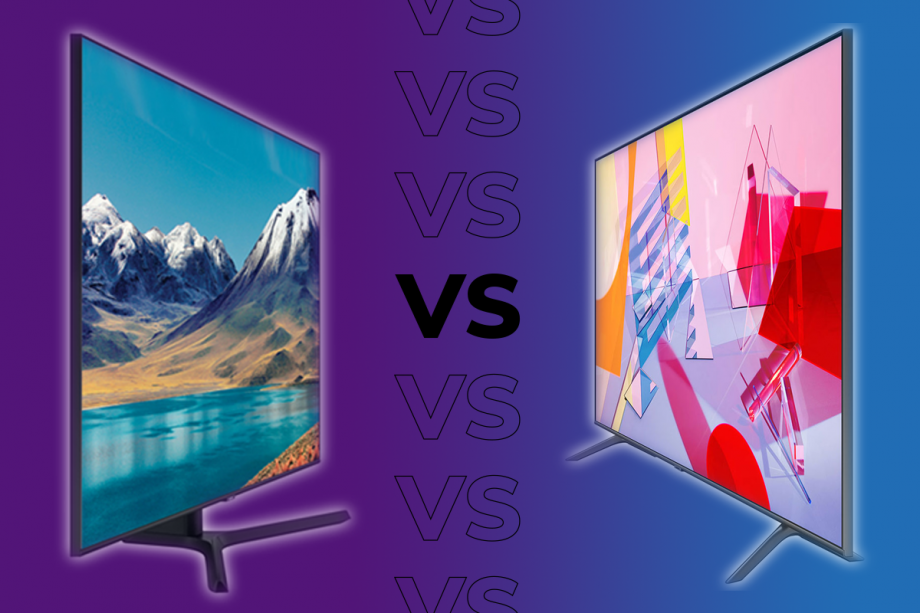Samsung TU8500 vs Samsung Q60T: Which cheap 4K TV is right for you?

While the Samsung TU8500 and Samsung Q60T are 4K TVs from the same brand, that doesn’t mean there aren’t a few differences between the two.
We’ve put the TU800 and the Q60T head-to-head to see what they have in common, and where they differ.
We gave the 50-inch TU8500 a four-and-half star review, though we haven’t had a chance to test the Q60T just yet. This means we’ll be comparing the two on the merits of their respective spec sheets and features. This will serve as a guide to help determine which smart TV is best for you.
Read on to find out how these two Samsung displays stack up against one another.
Related: Best Cheap TV
Samsung TU8500 vs Samsung Q60T – Price
Both TVs are available in multiple sizes, so to keep things fair, we’re comparing the pricing for the 50-inch models.
The Samsung TU8500 is the more affordable of the two. With an RRP of £599 at launch, this set is placed in the mid-tier for pricing, but it can be found for less these days if you know where to look.
By comparison, the Q60T was priced around £899 at launch, putting it much closer to the high-tier price bracket that tends to get occupied by OLED sets.
Regardless of where you purchase the TV, the TU8500 is the more wallet-friendly option.
Samsung TU8500 vs Samsung Q60T – Design
The TU8500 and Q60T share a few traits in terms of design. Both feature slim black bezels and have identical dimensions, with each TV 57.1mm in depth.
The most obvious way the two designs differ is their stands. The TU8500 features V-shaped stand, which is slightly taller than the Q60T’s feet. The Q60T’s feet look more elegant and the design as whole feels more discreet. The Q60T’s feet are also lighter, which allows the set to weigh 2.1kg less.
As far as connectivity goes, the TU8500 includes three HDMI (one eARC), two USB, Ethernet port and a CI slot. The TV also features built-in Wi-Fi and Bluetooth connectivity. Samsung doesn’t provide as much detail for the Q60T, but it does state eARC and Bluetooth support. An Argos listing provides the full specs and it matches the TU8500 with three HDMI, two USB, an Ethernet port and built-in Wi-Fi.
With so many similarities in the design and connectivity, the decision really comes down to what type of stand suits your living environment, and which look you prefer you prefer. That makes this comparison a draw.
Related: Best Samsung TV
Samsung TU8500 vs Samsung Q60T – Features
The biggest difference between the two is the type of display they use. The TU8500 has a Dynamic Crystal Display, while the Q60T is part of the QLED range.
Dynamic Crystal is a display that employs two panels rather than the single backlight seen on a traditional LED. Samsung claims that its Dynamic Crystal display offers 64 times more shades compared to other conventional UHD TVs. Meanwhile, the QLED range employs Quantum Dot technology for bolder and more precise colours, delivering 100% colour volume with no image degradation over time.
Both have Dual LED, which helps to bump up contrast for more lifelike images, while Samsung’s continued support of HDR10+ over Dolby Vision sees its dynamic metadata solution adapt HDR content on a scene-by-scene basis for brighter and darker scenes. They also have Ambient Modes that turns the display into a decorative feature when not in use.
Samsung’s Tizen operating system provides access to settings, sources and apps in the form of Netflix, Disney Plus, Apple TV, BT Sport and more. There’s even a Multi View feature, which splits the screen in two so the viewer can watch two sources at the same time.
Both TVs have further smart capabilities including SmartThings, which offers the ability to control the TV, as well as smart home appliances. In terms of voice assistants, there’s Alexa, Google Assistant (coming soon) and, of course, Samsung’s own Bixby.
The list of features is nearly identical but, ultimately, the Q60T takes this victory with its QLED display.
Related: Best 4K TV
Samsung TU8500 vs Samsung Q60T – Performance
The TU8500 is powered by Samsung’s Crystal Processor 4K, and we found the TV offered improved image quality compared to most mid-range LED displays at similar prices. The device offers an array of picture modes including Movie, Standard, Natural and Dynamic, as well as two options for gaming. Natural and Standard offer satisfactory contrast and accurate colour temperatures, compared to the Dynamic’s slightly overcooked colours.
Gaming performance is excellent, but the TU8500 does not support 4K/120Hz gaming, making it less ideal for PS5 and Xbox Series X upgraders. HDR performance and the brightness of the display could do with a boost, too. That said, this display will easily be an upgrade over many older/non-4K TVs.
It’s difficult to comment on the performance of the Q60T as we have yet to test it out for ourselves, but expect what rang true with the TU8500 to be applicable here. QLED generally brings a brighter performance at play than the Dynamic Crystal TVs, along with greater colour volume and slicker image quality.
Samsung TU8500 vs Samsung Q60T – Verdict
While we haven’t reviewed the Q60T yet, we’ll be looking to get a review sample to judge its quality.
As such, while we’re big fans of the TU8500 and what it brings to the table at its more affordable low price, odds are the Q60Ts picture quality will be an improvement on the TU8500.
If you can take you budget further and splash out money, the Q60T would make sense, as it’ll arguably shade it when it comes to upscaling SD and HD content. Nevertheless, for those who want to keep costs down, the TU8500 is a cracking choice for the price.


